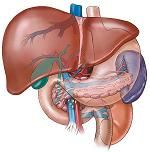what you should know
Infectious diseases, including hepatitis infections, can have a significant impact on chronic health conditions such as non-alcoholic fatty liver disease (NAFLD).
Assessing the interaction between prior infection and NAFLD can be challenging due to possible interactions between NAFLD treatment and antiviral therapy.
The complex pathways and mechanisms by which viral infection exacerbates metabolic disturbances and inflammatory processes in NAFLD highlight the critical role of understanding this interaction.
We often neglect to discuss the larger impact of infectious diseases on chronic health conditions. However, this relationship is not new—it’s just underappreciated and underappreciated. COVID-19 has further illuminated this, but what about other infectious diseases? Specifically, the effects of hepatitis infection.
CDC’s 2021 Viral Hepatitis Surveillance Report notes some important findings in 2021, including
- 5,728 cases of hepatitis A reported in 47 states, with an estimated 11,500 infections
- 2045 cases of acute hepatitis B, resulting in 13,300 cases of infection and 14,229 newly reported cases of chronic hepatitis B
- There are 5023 cases of acute hepatitis C in 42 states; the estimated total number of infections is 69,800, and the total number of new reported cases of chronic hepatitis C is 107,540.
- Hepatitis E is uncommon in the United States, but sporadic cases have been reported, caused by genotype 3 HEV, affecting older men over 40 years of age.
With this in mind, a research group recently sought to address the dynamic relationship between prior HBV, HAV, and HEV infection and nonalcoholic fatty liver disease. Non-alcoholic fatty liver disease (NAFLD) is caused by the accumulation of fat in the liver, often as a result of obesity, and affects 10-20% of Americans. While lifestyle changes can often control or reverse fat accumulation, the most common complication if left unchecked is cirrhosis.
The authors provide a detailed analysis of each infection and its impact on the liver through a retrospective study, highlighting the intricate relationships and confluence of many factors. “Viral infection synergizes with the metabolic derangements inherent in NAFLD to accelerate the transition from benign hepatic steatosis to more severe conditions such as non-alcoholic steatohepatitis (NASH) and fibrosis. The intricate interplay between viral factors and underlying metabolic perturbations The effects can amplify the inflammatory cascade, accelerating the progression of fibrogenesis and more severe liver pathology.”
But from a diagnostic perspective, determining the interaction between past infection and NAFLD is difficult because treatments for NAFLD often interact with antiviral treatments, affecting efficacy. Such viral infections can complicate assessing the severity of NAFLD, making the determination of liver damage extremely difficult to truly understand.
Therefore, the authors note that treatment decisions become difficult because the dynamics between antiviral therapy and NAFLD management are subtle and unique to each patient. Viral load may vary depending on the viral infection, with higher viral loads worsening the metabolic derangement of NAFLD, and medical management must also consider immune responses that may lead to cascading effects such as inflammation around the liver. In short, the relationship is complicated even on the best of days.
“Viral infections can exacerbate the metabolic disturbances and inflammatory processes of NAFLD through interconnected pathways and mechanisms. As we explore the intersection of these two fields, we will find that this interaction transcends mere academic curiosity and becomes a disease key determinants of progression, diagnostic complexity, and individual treatment strategies in response to viral infections and NAFLD,” wrote.

